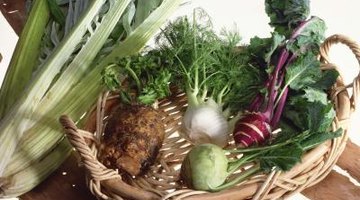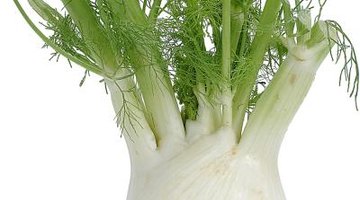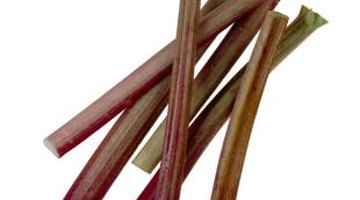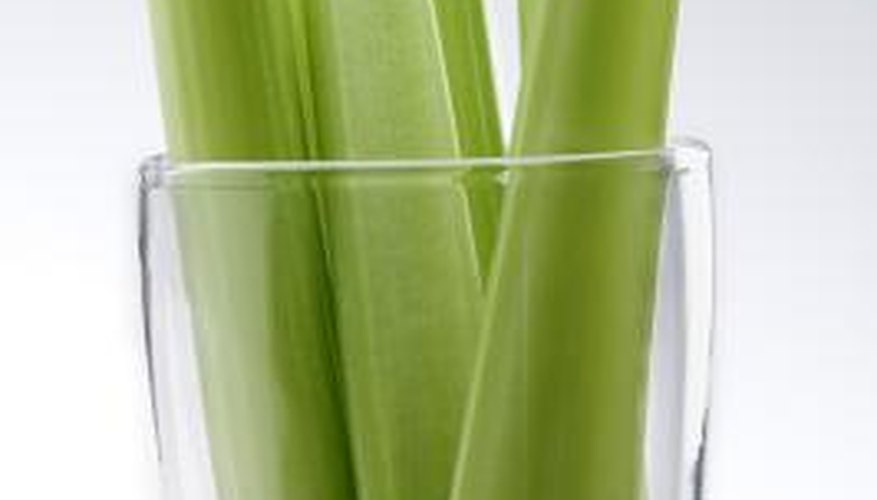Celery comes from a family of vegetables, commonly used in stews and casseroles, called stalk vegetables. They derive this name from how they all grow edible stalks. Because they are so closely related, many of the vegetables in the family not only look similar but can be used as substitutes for each other in dishes.
Cardoon

The cardoon, also called Texas celery and cardoni, is a vegetable that is native to the Mediterranean and popular in Italy, northern Africa and Spain. While it looks strikingly like celery when cultivated, it is likely more closely related to the artichoke and has a more bitter taste than celery. It is typically served in a similar way to celery: as a side dish with dips or sautéed in oil.
- The cardoon, also called Texas celery and cardoni, is a vegetable that is native to the Mediterranean and popular in Italy, northern Africa and Spain.
Because cardoons require so much space to grow -- and typically can't pay for the large amount of land it occupies -- it fairs poorly as both a cash crop and a small garden vegetable.
Chinese Celery
Chinese celery, also called kinchay or khuen chai, is a form of celery native to Europe and Asia. It has longer and thinner stalks than common celery, thick parsley-like leaves and a stronger flavour. Because it is so similar to celery, it can substituted into most celery dishes, especially if you want a more intense celery flavour. It is common in many soups, stir-fries and Asian dishes.
- Chinese celery, also called kinchay or khuen chai, is a form of celery native to Europe and Asia.
- Because it is so similar to celery, it can substituted into most celery dishes, especially if you want a more intense celery flavour.
The leaves of the Chinese celery taste like their cousin, parsley, and can be substituted for the spice in any dish.
Fennel

Fennel, also called finocchio, has celery-like stalks, but differs in that it also grows an onion-like bulb. It is very popular in Italian and Indian dishes and is one of the most versatile of the stalk vegetables: The stalks are commonly sautéed or braised; the bulb, frequently eaten raw, as in a salad, has a powerful anise flavour; the leaves, similar to Chinese celery, are an excellent spice; and the aromatic seeds have a wide range of uses, from flavouring sausages to lending fragrance to house sprays.
Because of their similar flavours, fennel seeds are sometimes incorrectly marketed as anise.
Rhubarb

Rhubarb has much larger stalks than celery and displays some redness in colour, in comparison to celery, which is strictly green. Because of its extreme tartness, rhubarb acts better as a fruit than a vegetable and is common, paired with berries, in many pies and preserves. Unlike celery and many of the other stalk vegetables, the leaves of rhubarb are not a good spice -- they are, in fact, poisonous.
